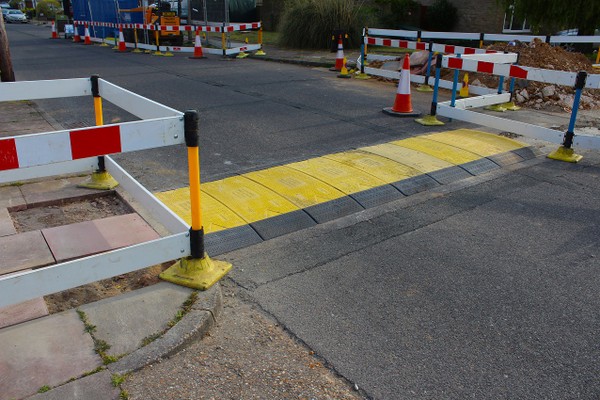Getting The Steel Road Plate To Work
Wiki Article
9 Simple Techniques For Steel Road Plate
Table of ContentsThings about Steel Road PlatesSee This Report on Steel Road PlatesSome Known Details About Road Plate See This Report on Steel Road Plate
Box culverts are cost-effective due to their rigidity and also monolithic activity and separate foundations are not needed. It is made use of in special instances, weak structure.Common compaction needs for a task may range from 90% to 95% of typical Proctor for non-structural locations to 98% or even more of customized Proctor for heavily packed sidewalks. Proctor tests are soil moisture-density connection examinations that establish optimum completely dry thickness (the system weight of the soil minus the weight of water) and also the optimal water web content for soil examples.
Water is added to four to six portions of the dried out dirt example in increasing quantities. The dry thickness enhances as the added moisture lube the dirt particles and allow better compaction from the same applied energy.

The 20-Second Trick For Road Plate
The dampness content is determined utilizing a gas-pressure moisture tester or straightforward field dry-back techniques. Density and also wetness results are outlined versus the original laboratory curve to validate a match. In scenarios where research laboratory information is not readily available, the area factor outcomes may be contrasted to a family of contours compiled from regional or local dirt information to select the most effective optimum density and maximum wetness curve.A dirt compaction examination makes use of among several approaches to determine the dry density and dampness material of the dirt in position. The 3 most common are gone over right here - steel road plates. Results from these field tests are contrasted to the Proctor examination results of the same soil developed in the laboratory and the proportion is expressed as the percent compaction.
1ft (2,830 g/cm). Density examination devices such as clubs, scoops, knives, and also sample bags are utilized throughout excavation. All the excavated product is very carefully collected as well as conserved in an airtight container. The pre-weighed Sand Cone Density Apparatus is inverted onto the base plate and also the steel cone is nestled into the base plate opening.
Afterward, the partially filled up device is considered once more, as well as the volume of the examination hole is calculated by dividing the mass of the sand loading the opening by the mass thickness of the sand. The damp weight of the recuperated dug deep into soil is divided by the examination opening volume to establish the wet density.
How Road Plates can Save You Time, Stress, and Money.
The percent compaction for the area density examination is calculated by separating the completely dry density of the soil by the maximum dry density from the proctor test. Pros, Cons, Accurate and dependable; a long background of approved use, Tests may take thirty minutes or more to complete, ASTM standard test technique, Heavy devices in the location might require to stop briefly procedure briefly, Does not call for substantial training, Different examinations must be used where muches of +1 - steel road plate.
find more info
The examinations are a little bit simpler to do than the sand cone and can be repeated promptly considering that the water is preserved in the vessel. Pros, Cons, Accurate and reliable; a lengthy history of approved use, Tests might take 15-20 minutes or more to complete, ASTM conventional test approach, Balloon membrane layers can puncture throughout look at this site screening, Does not call for extensive training, Intended for fine-grained or granular dirts without muches of rugged material, No licensing or permitting required for usage, Must not be utilized to evaluate soft saturated, highly plastic dirts, Numerous tests can be done without changing density media, All excavated material needs to be very carefully removed, Tools is cost-effective Dampness material and also unit weight should be performed on retained soil samples from either a sand cone or rubber balloon examinations to finish computations for soil compaction.
The graph below programs a few various approaches that can be made use of for dampness determinations as well as there are a range of ranges as well as equilibriums that can be used for evaluating soil examples in laboratory or field setups. Nuclear thickness gauges figure out dirt thickness by measuring gamma radiation transmission in between a probe containing a radioactive Cesium 137 (or various other) source and also Geiger-Mueller discovery sensors in the base of the gauge.
The 45-Second Trick For Road Plate Steel
Soil wetness is measured at the same time using a different resource of Americium 241. A steel pole is driven right into the dirt at the examination website, forming a pilot hole. The probe containing the contaminated resource is lowered approximately 12in (305mm) great post to read right into the pilot hole, as well as radiation transmission is measured for one min.
Report this wiki page